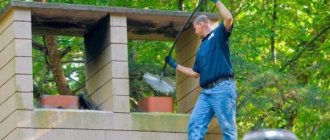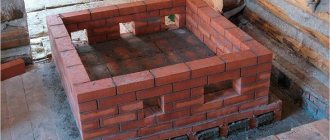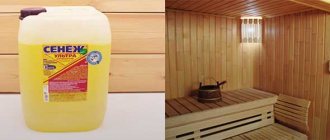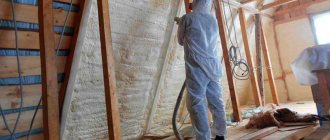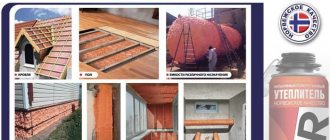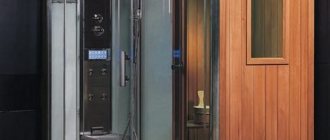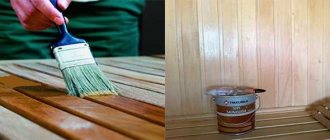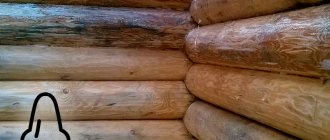Since the advent of concrete, the world of construction has told us a lot: reinforced concrete, gas and foam concrete, expanded clay concrete and many other building materials. But brick has remained virtually unchanged for centuries. It remains a durable, comfortable and aesthetically pleasing building material. The only thing that has been added is the ability to choose - solid or with cavities, masonry or decorative. However, the real nightmare for the owner of brick buildings (in addition to direct physical destruction) can be efflorescence on the brick. The reasons for their appearance may be different, and so can the ways to eliminate them. But one thing is certain - this is not the norm, but an undesirable phenomenon, and you simply cannot ignore it.
Typical efflorescence on brick
Why do efflorescences appear?
The main reason for the appearance of white spots is the crystallization of substances contained in the raw materials and solution. Under conditions of excessive water absorption of facing bricks, many salts are formed.
In Russia, they named the share of Russians planning domestic tourism this year
“Why would I give love to someone else’s uncle?”: Syabitova will not marry again
Turkey has named two conditions for lifting strict entry requirements for tourists
Causes of efflorescence that do not depend on humans:
- lack of measures to wash sand during its extraction;
- salt content in the raw materials used to make bricks;
- the presence of a large amount of salts in water;
- groundwater lying close to the surface of the earth;
- close location of chemical production enterprises.
Other reasons:
- violation of instructions for preparing the solution;
- low quality materials;
- use of cement-lime mixtures;
- poorly made waterproofing;
- lack or poor protection from moisture, snow and rain.
Nature of the phenomenon
White deposits on brickwork are the consequences of crystallization of salts dissolved in water that are part of the building material or masonry mortar.
The most common substances that form efflorescence :
- calcium sulfate is part of the brick;
- sodium and potassium sulfates are formed during the chemical interaction of clay, silicate mixture and cement;
- calcium carbonates, sodium carbonates, potassium carbonates and calcium hydroxide are contained in cement.
Efflorescence appears due to the content of sodium or potassium chloride, iron and magnesium oxides in building materials.
While the masonry is wet and the mortar has not reached full strength, stains are not visible, but measures must be taken to reduce the likelihood of their appearance already at the construction stage.
How to avoid white streaks
In regions where the temperature drops below 5 degrees, efflorescence is very difficult to avoid, but it is possible. For this:
- Do not add antifreeze agents to the masonry mortar.
- Brickwork is done only in good weather.
- To prepare the mixture, coarse sand and water without soluble salts are used.
- The solution must be fresh and thick. There is no need to dilute it with large amounts of water.
- During breaks, the masonry is covered to prevent waterlogging.
- During the construction of walls, it is necessary to work carefully with the mortar; it should not get on the brick.
- If the solution gets on the surface, it must be removed immediately with a stiff brush.
- After completing the masonry, allow the solution to dry and treat with a water-repellent agent.
And also to avoid the appearance of efflorescence, it is necessary to buy material only from a trusted manufacturer or supplier and not skimp on building materials.
“In this decade”: the State Duma called the transition to a four-day week inevitable
Study finds ultrasound may damage coronaviruses
Minimum makeup, comfortable hairstyle: how to create your own sporty style
When building a house, remember that the less water, the less likely it is that efflorescence will appear on the surface of the brick. And in order not to overdo it with liquid, liquid soap or dishwashing detergent is added to the solution. This makes the mixture more flexible and better distributed over the surface.
To prevent the appearance of white streaks, it is necessary to use facing bricks after constructing the roof of the house.
Some experts believe that before treating the walls, it is necessary to build a roof on the house and install a drainage system. Carry out waterproofing work on the foundation and blind area. Open the seams of the brickwork and allow the walls to dry thoroughly during one heating season.
But what to do if efflorescence has already appeared? They must be removed to avoid destruction of the brick.
The first space hurricane: plasma swirled over 1000 km
“Great-grandmother can’t visit them yet”: Valeria spoke about the family of her son Arseny
Business in a new way: the world's first hotel with polar bears opened in China
What is the danger of efflorescence on wall and facing bricks?
There is no doubt that whitish stains spoil the appearance of a façade lined with red façade bricks. But is it worth worrying so much if efflorescence only affects the cosmetic effect?
In fact, the appearance of a brick wall with efflorescence is only a visible part of the problems with the brickwork. The real trouble lies deeper - after all, salts, crystallizing, appear not only on the surface, but also in the thickness of the brick, in its very internal structure. The area of formation of such crystals is the pores of the brick, cavities in its volume. As the crystal grows, it destroys and corrodes the smallest particles, enlarging the pores.
Efflorescence destroys brick
This is how the process of brick destruction begins, slow, invisible, and therefore doubly dangerous. You may have seen the result: a brick oversaturated with salt crystals, even if it was laid recently, begins to delaminate and fall off in pieces, thinning the brick wall.
Fortunately, in order to achieve this state, several factors must come together, in addition to salting out. But in any case, even an aesthetic moment is quite enough to ruin the mood of the homeowner. After all, the facade is the face of the entire building.
Prices for various types of facing bricks
Facing brick
How to remove white stains
To remove salt deposits from bricks, you need to use an efflorescence remover. All work is carried out in the following order:
- Using a brush and salt stain remover, remove white spots.
- Using a mini-wash, rinse the treated surface thoroughly.
- We use a special product to reduce the porosity of the brick to prevent the release of salts in the future.
- We treat the brick wall with a water-repellent compound.
- After each stage, let the brick wall dry thoroughly.
How is efflorescence removed?
To hand over the project, builders rush to remove efflorescence mechanically: rinse with water, then brush off any remaining salts that have not dissolved. The disadvantages of this method are that after a couple of days, as it dries, the salts will again appear on the brick.
Removing efflorescence using a special chemical agent (removal), which can be purchased at any specialized store. You will get a more effective and long-lasting result. Washing destroys types of salts that are not susceptible to water. Until next spring, the brickwork on the building will look great.
To protect bricks for a long time (up to 10 years), you will have to increase the construction estimate in order to purchase a special liquid - a water repellent. This product is used to treat bricks before laying or after construction is completed. It is better to do this processing in advance. But in practice, we know that everything is carried out after the appearance of efflorescence.
Folk remedies
Many people do not trust industrial chemistry. In addition, special means for washing off efflorescence are expensive and not available to everyone. Therefore, you can use old but time-tested methods for removing white stains:
- Add three tablespoons of vinegar and a little liquid detergent to a ten-liter bucket of water. Stir and apply to the wall. After 10 minutes, rinse with water.
- Use 4% hydrochloric acid solution. Apply acid to a damp brick wall and leave for ten minutes. Afterwards, rinse with plenty of water.
- Apply ammonia to the brick wall. After some time, rinse off with a brush and water.
After using one of the methods, the wall is thoroughly dried and then treated with a water-repellent composition. The solution is applied with a brush, sometimes in two layers. After all the necessary procedures have been carried out, the brick will stop absorbing moisture. The water will just roll off. When applied correctly, the protective layer will last for six years or more.
Found a violation? Report content
Cleaning bricks from mortar. Water and high pressure
Let's consider how to clean brick from mortar and efflorescence, as well as other simple stains. Water can solve these problems perfectly. Excellent results can be achieved by directing the flow to the surface under high pressure.
Washing a wall with water pressure Source waterproofing.su
The jet softens and washes away the cement mortar if it is not in a too thick layer. It copes well with salt secretions, but with a small caveat. The wall must be dried after this treatment. Otherwise, increased humidity on the surface will again provoke the release of salt.
For drying, you can use the same high pressure. Just use hot air, not water. The compressed atmosphere will remove all moisture from the surface of the brickwork to the last drop. This treatment after washing will prevent dust from sticking to the wall. And it will retain its aesthetic appearance for a long time.
If you add chemicals to the liquid, you can easily deal with stains from petroleum products and traces of corrosion. But this will be discussed in more detail later.
Application of sandblasting
The same air stream and under the same high pressure. But along with it, it carries abrasive powder into the nozzle. And the latter easily copes with almost all contaminants.
Using hardware technology, bricks are cleaned from:
- traces of fuel oil;
- old paint;
- splashes of cement or bitumen;
- traces of corrosion;
- mold and lichens.
Sandblasting of brick walls Source alp-ur.ru
Moreover, the surface becomes perfectly clean. The main thing is not to exceed the pressure in the device. Otherwise, grains of abrasive may leave marks on the brick itself.
But such cleaning can be carried out in different ways. In the classic version, only dry sand is used. But if the contamination of the walls is large-scale, then the abrasive material is pre-wetted. This enhances the stripping effect.
You can also sandblast with either ice or fire. In the first case, cleaning is considered the most environmentally friendly. And small sharp pieces of ice can remove dirt from even the smallest cracks. The fire method guarantees the complete removal of all parasites from the wall. From ordinary mold to the longest lichen roots.
Mechanical method
We are talking about chipping away smudges of mortar with hand tools. But while ceramic bricks can still be cleaned with a regular scraper or hammer and chisel, silicate bricks will require considerable effort.
Beating off old plaster Source fasad-exp.ru
Due to the increased adhesion of the surface, sometimes it seems as if the brick and mortar are one whole. Therefore, instead of a hand tool, only an electric one will help here. Rotary hammers with pointed tips and grinders with metal brushes will be able to separate one from the other faster and more efficiently than a regular chisel.
The stage of mechanical chipping is completed by sanding with sandpaper. Moreover, for bricks you can take material with large grains. And after completing all operations, it is necessary to rinse the treated surface with water to remove all dust from it.
How to protect masonry from efflorescence?
First of all, you should use high-quality building material. In addition, the following will help to significantly reduce the risk of whitish streaks:
1. Introduction of special additives into the masonry mortar to increase plasticity instead of traditional lime. Such additives are microfoaming agents-hydrophobizers, for the production of which organosilicon compounds, resin, fatty or naphthenic acids are used.
2. Compliance with the wall drying regime. Plastering work inside the house cannot be done until the masonry is completely dry. If a building built in summer is dried from the inside in winter and the walls are simultaneously plastered, due to the difference in temperature and pressure, moisture from the plaster will be forced out into the brick and salt will appear on the outside of the walls in the spring.
3. Protection of masonry from waterlogging. Do not add excess water to the mortar, soak the bricks or leave the masonry in the open air. It is not advisable to carry out work on the construction of walls in the autumn-winter period.
How to clean tiles or paving stones?
Tiled spaces will look neat only with regular maintenance; even completely new tiles need to be cleaned of cement that has adhered during laying work.
As the tiles are used, contaminants of various origins accumulate on them. This could be spilled car oil, efflorescence, ingrown moss, or dirt and dust. The resulting stains spoil the beauty of the tiles, giving them a sloppy appearance. Timely cleaning helps remove absorbed dirt and extend the life of the coating. Each type of stain has its own optimal product and method of working with it.
From cement after laying
The first problem associated with contamination of the tile covering often occurs immediately after it is laid. During work, especially when the tiles get wet, cement may stick to them. It soaks into porous surfaces and leaves unsightly stains. They are especially noticeable on colored tiles.
However, do not be discouraged. Cement deposits can be easily removed by hand. To clean, you will need a simple home remedy - 9% table vinegar and a wire brush. The principle of action of acetic acid is that it destroys the lime contained in cement. Once in contact with acid, cement is easier to remove mechanically using a brush.
From dirt and dust
As a rule, the source of dirt and dust is bare areas of soil that are located near the paved sidewalk. Soil particles and grains of sand are carried with the shoes of pedestrians and the wheels of vehicles. To remove dust, the tiles are washed with water supplied under high pressure from a hose. If dust is strongly embedded in a rough surface, it can be removed using a stiff brush, such as a metal brush. The result will be better if you add a small amount of liquid soap to the water.
From grease stains and bitumen
Greasey contaminants remain when oils come into contact with them. The most common culprits for the appearance of greasy stains on tiles are cars. Engine oil that spills from them leaves permanent stains that cannot be washed off with water. How can you get them off the sidewalk?
There are several methods:
- washing with a soda solution using a brush;
- sandblasting;
- burning the oil with a gas burner, followed by cleaning the surface with an iron brush.
You can try to remove black bitumen stains mechanically by treating the surface with a metal brush. Bitumen dissolves well with acetone and white alcohol, but this cleaning method should not be used. The mixture of bitumen and solvent will penetrate even deeper into the porous structure and will be impossible to remove.
From white plaque (efflorescence)
Efflorescence is the name given to plaque formed when salt solutions of various compositions that have been absorbed into tiles dry out. The origin of efflorescence may vary.
Sources of efflorescence:
- salts present in the concrete mixture from which the tiles are made;
- salts that came from the solution used during installation;
- reagents that are used to sprinkle streets in winter when there is ice;
- groundwater of increased hardness;
- melt and rain water with salt impurities.
Externally, efflorescence looks like whitish streaks or spots on the surface of the tile. They consist of salts that are insoluble in water, so they cannot simply be washed off. An acidic environment is needed to dissolve salt deposits. It is created by adding acetic, citric or hydrochloric acid to water
The latter is a strong acid, so it should be used with caution
Another option for cleaning efflorescence involves using biodegradable detergents. An example of such a product is HG cleaning solution for paving stones. Its components disintegrate in the external environment without causing harm to nature. The optimal ratio of product and water is 1:10.
From moss
Moss growths usually appear in conditions of humidity and lack of sunlight. They not only spoil the appearance of the path, but also make it slippery. You can remove moss from the tiles with a brush and pressurized water, but the moss can quickly grow back. If possible, you should provide access to the surface of the sun path (cut off overgrown bushes) and eliminate contact with moisture (repair a leaking drain, improve drainage).
Moss spores remaining in crevices can be destroyed by treating problem areas with a chlorine-containing solution. Chlorine is poisonous and harmful to nature, so such treatment should be carried out extremely carefully, using a spot method. The solution is applied to the surface using a spray bottle. Colored tiles may fade when exposed to chlorine, so it is better to use herbicides when working with them.
Cleaning sand-lime brick
Cleaning sand-lime brick requires more effort, attention and perseverance. To work you will need:
- sandpaper;
- drill with grinding attachment;
- metal brush;
- respirator and safety glasses.
As in the first case, wet the cement and try to peel it off with a metal brush. When using a drill, work extremely carefully so as not to damage the surface of the brick and not leave marks (it is better to use a drill to remove large pieces). Be sure to wear a respirator and goggles to protect your respiratory system and eyes. Clean the treated surface with sandpaper and moisten with water. Using a chisel and hammer is highly discouraged, as you can damage the material.
bouw.ru
Category: House walls Today, most owners of suburban areas prefer to build brick houses for permanent residence. This building material allows you to create highly aesthetic structures. But when masonry is carried out, no matter how carefully and professionally it is carried out, there are always traces of mortar on the brick surface that need to be removed. There are several ways to clean the walls from mortar: Mechanically; Washing; Special cleaning compounds. To carry out mechanical cleaning work, you will need the following tools: Scraper; Chisel; Construction hammer; Chisel; Putty knife; Hard brush; Drill with a special attachment. During work, you should use personal protective equipment: a respirator and rubber gloves. The mechanical cleaning method is only suitable for high-strength building bricks, which are difficult to damage when removing individual pieces of concrete. This method is not suitable for facing bricks, which are characterized by increased strength. Before using any of the above tools, moisten the surface to be cleaned with water. Water entering the pores of the mortar softens it to some extent and facilitates the cleaning process. The blows must be applied along the surface of the brick. It is acceptable to use an angle grinder with a special attachment as an alternative.
But you need to work with it extremely carefully to avoid deep cuts on the brick surface, which will be very difficult to disguise. The mechanical method is most suitable for cleaning used bricks
Most often, a special construction hammer is used for this. If you plan to use individual bricks for the front surfaces, then it is better to try soaking them in water, and then clean the mortar with a stiff metal brush. Washing is usually used to clean brick surfaces with minor dirt. This method should not be used to clean stains caused by fungal mold. Moreover, the effect of complete purification from a harmful microorganism is visually very deceptive. Since when washing the wall with water under pressure, the greenish stains initially completely disappear, but after a while they appear again. This is due to the fact that moisture promotes the spread of fungus. Moreover, through enlarged pores, it penetrates into the depths of the seams, and it will be increasingly difficult to fight it in the future. The most universal way to clean brick surfaces is to use special paste-like cleaning products. They contain certain chemical components that dissolve contaminants, which facilitates their easy removal with ordinary water. To clean minor contaminants, you can use regular auto chemicals. It is applied to a napkin, which is used to wipe the contaminated areas of the surface. It should be remembered that any chemical cleaners are harmful to health, therefore, when working with them, the use of personal protective equipment is mandatory. Very often problems arise when removing stains of various origins. Thus, emerging salt stains should be removed mechanically using a brush, tar stains can be easily removed with kerosene or turpentine, and soot from fireplaces can be easily removed with a regular detergent. And the main thing to remember is that any contamination on a brick surface is easier to prevent than to eliminate. Also read:
build-dom.com
How to clean mortar from brickwork
Article Archives
Article ArchivesSelect month August 2022 (1) March 2022 (1) February 2022 (1) December 2022 (1) November 2022 (1) July 2022 (1) May 2017 (2) March 2022 (2) January 2022 (2) December 2016 (1) November 2016 (1) September 2016 (1) August 2016 (1) July 2016 (1) April 2016 (1) March 2016 (1) February 2016 (3) January 2016 (2) November 2015 (2) August 2015 (2) July 2015 (3) June 2015 (3) May 2015 (3) February 2015 (3) January 2015 (3) December 2014 (7) November 2014 (6) October 2014 (2) June 2014 (4) April 2014 (6) March 2014 (6) February 2014 (4) January 2014 (3) December 2013 (4) November 2013 (1) October 2013 (3) September 2013 (1) July 2013 (2) June 2013 (2) May 2013 (2) April 2013 (4) March 2013 (9) February 2013 (5) January 2013 (7) December 2012 (4) November 2012 (7) October 2012 (10) September 2012 (4) August 2012 (5) July 2012 (8) June 2012 (8) May 2012 (9) April 2012 (7) March 2012 (8) February 2012 (17) January 2012 (12) October 2011 (5) September 2011 (22) August 2011 (12) July 2011 (10) June 2011 (5) April 2011 (11) March 2011 (21) February 2011 (2)
Reasons for education
The appearance of spots is caused by a number of reasons. Some are associated with violations of brick manufacturing technology, others are a consequence of unprofessional work of builders. To summarize, we can name the following main factors contributing to the appearance of efflorescence:
- excessive addition of additives during the brick production process;
- changing the ratio of components in the manufacture of installation solutions;
- a large amount of lime in brick raw materials or working mixtures;
- increasing the time for soaking bricks before starting work;
- construction in the rain or snow.
The quality of the raw materials used in the manufacture of bricks is of great importance. Alumina initially contains moisture, which dissolves natural salts. When using hard water, the salt concentration increases. An additional amount of salt impurities can be introduced by unwashed sand from quarries, which will later cause efflorescence.
The quality of the soil on which the structure is built can also aggravate the situation. Masonry located close to chemical plants is especially prone to damage. Aggressive environmental components can be adsorbed by bricks.
It is impossible to give a definite answer to the question of why a brick façade begins to turn white. It is necessary, if possible, to get rid of all negative factors at the construction stage. Subsequently, the facade is cleaned and coated with protective water-repellent compounds.
Removing salts from masonry
To complete the information, it should be noted that salt does not always appear on the masonry solely due to the absorption of atmospheric moisture. Additives added to the solution - antifreeze or accelerating setting - may also be to blame. The water used for mixing and the quality of the sand, which must be washed, are of great importance.
Capillary absorption of moisture occurs primarily due to the absence of layers of rolled waterproofing material between the base of the foundation and the basement wall, and between the base and the wall of the house. Moreover, this material should not be laid dry - it should be glued to bitumen mastic.
Usually this is a whole complex of factors that lead to the same result. People who do construction with their own hands do not always know about such seemingly trifles, or simply do not attach importance to them. And then they rack their brains: “How to remove efflorescence on brick?” It’s good that there are means that allow you to fight this, frankly speaking, unaesthetic phenomenon.
All means are good to fight
Before discussing the process of cleaning masonry, let's figure out how to remove efflorescence on brick. It is impossible to do this without a special tool.
Well, you wash the facade, and salt deposits will appear again and again - and this will continue until you do everything right. Let's see what the retail network offers us for this purpose.
- One of the most popular brands of products intended for cleaning efflorescence is Neomid-550. This is a universal option that can be used not only for brick, but also concrete and stone surfaces.
- The concentrated composition is diluted in half with water before removing efflorescence on the brick. If cleaning must be done at sub-zero temperatures, alcohol can be used instead of water. It is packaged in bottles with a capacity of 1 l, 3 l and 5 l, and costs approximately 400 rubles. per liter
How to remove efflorescence on facing bricks: anti-salt Neomid -550
- The composition produced under the Good Master brand is equally effective and inexpensive. It penetrates deeply, dissolves and removes salts from the pores. Perfectly removes even old plaque. Packaged in 5l and 10l canisters, cost 450 and 860 rubles. respectively. It does not require dilution, as it is already ready for use. Unlike the previous option, it contains acid and removes all types of salts.
- The “Anti-vysol Aqua” product is generally a universal cleaner. It is effective not only against soluble salts, but also against sulfate and carbonate deposits, so it can be used not only to remove efflorescence, but also to clean the facade from traces of masonry mortar.
The drug is also active against fungus and mold, which greatly simplifies the task, eliminating the need to also buy a biocide. With the exception of limestone and marble, it can be used to treat any surface.
The cleaner is ready for use, packaged in plastic containers of 5 liters and 10 liters, and costs around 300 rubles. per liter
Masonry processing process
There are a lot of products designed to remove salts - we have presented only a small overview. As for the process of applying them, no matter which option you choose, the processing is carried out in the same way.
First, the wall must be prepared by cleaning the flaking areas of the masonry from pieces and crumbs of brick, as well as using a metal brush to treat those places where there are significant salt deposits. They need to be cleaned off so that only whitish spots remain.
Cleaning brick walls
If the salt cleaner works effectively, within a couple of minutes the treated area will become clean. Apply such compositions as a regular primer - with a roller or brush. You can also use a spray bottle, but then the consumption will be slightly more than stated by the manufacturer.
After waiting the prescribed number of minutes after applying the drug, it should be rinsed with water from a hose with good pressure. Then, the walls need to be allowed to dry, and the protective silicone impregnation mentioned above can be applied.
Why delete
A visible feature of efflorescence is the unsightliness of the front surface of the cladding. However, a more significant problem with efflorescence is the destruction of the brick structure. The front surface of the material first becomes scaly, and then large cracks form, which lead to the destruction of the block.
In this way, the entire facing masonry deteriorates not only in terms of external characteristics, but also its integrity is destroyed, which leads to a decrease in its heat-saving indicators, protective properties and other qualities.
It is especially important to monitor the brick if insulation is laid between the facing masonry and the load-bearing wall: if the lining is destroyed, the insulation may become unusable, especially if the cause of efflorescence is poor-quality waterproofing
